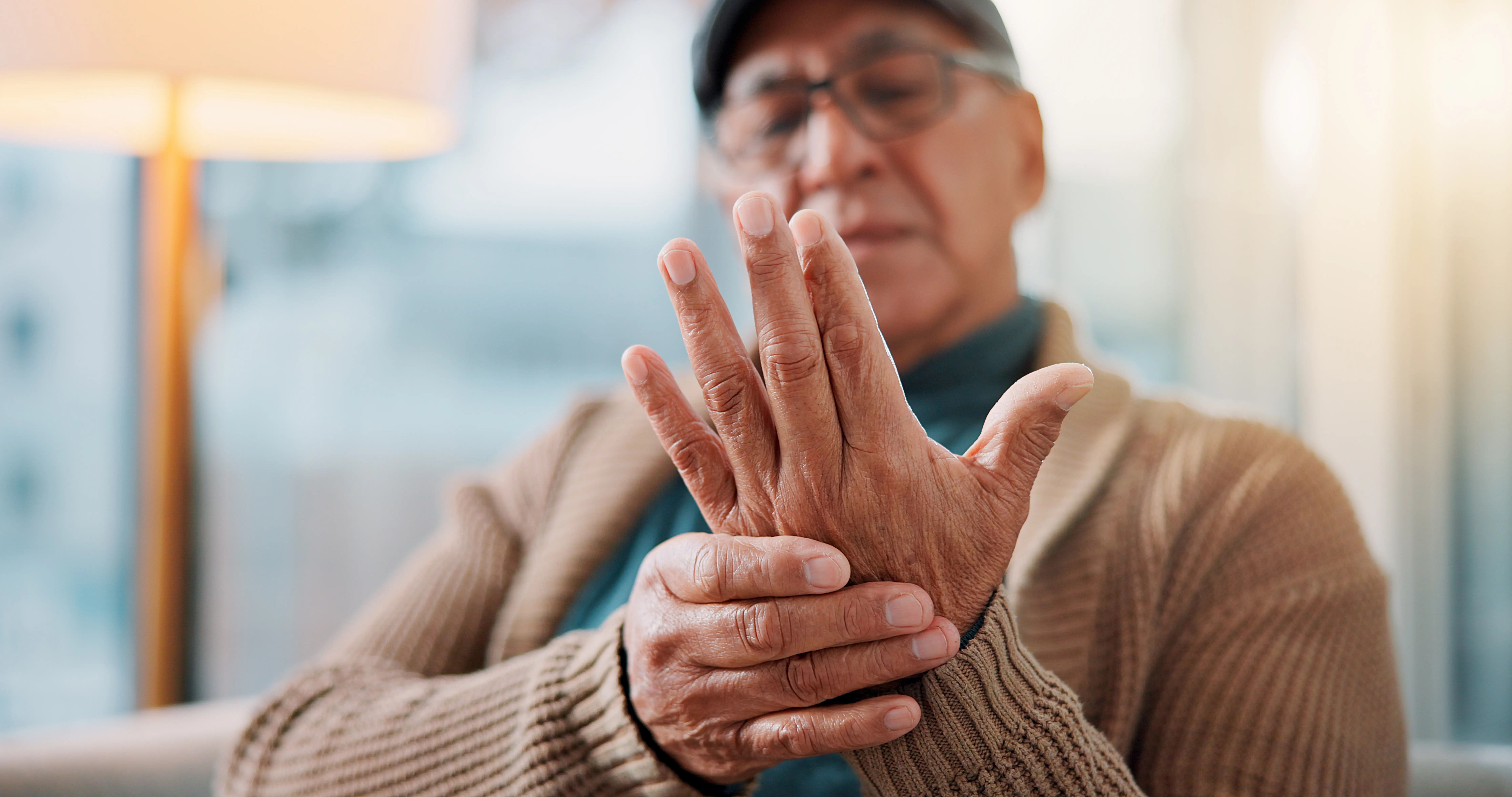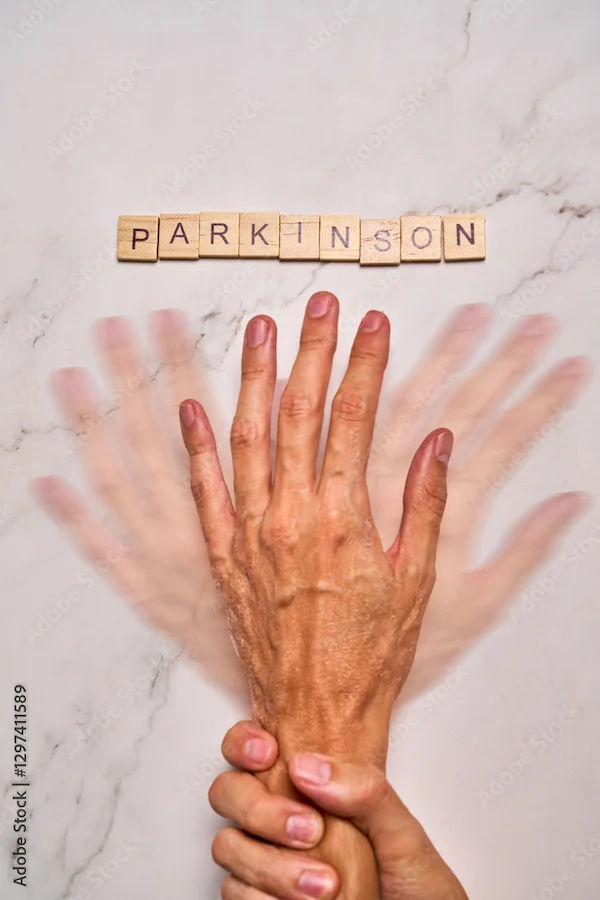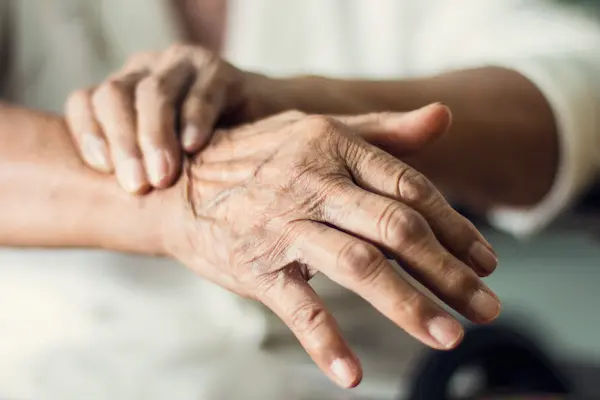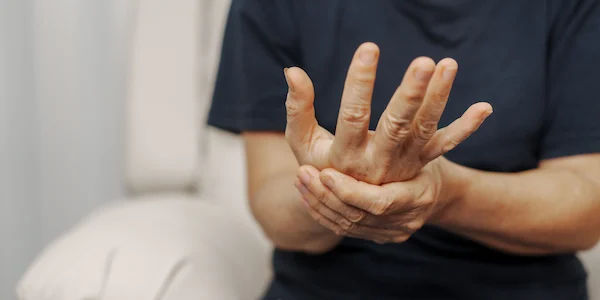Signs Of Parkinsons Disease And Stages
Learn to recognise the early signs, symptoms, and stages of Parkinson's disease. Understand both motor and non-motor indicators, the Hoehn and Yahr scale, and strategies for effective management.

Written by Dr. Rohinipriyanka Pondugula
Reviewed by Dr. M L Ezhilarasan MBBS
Last updated on 6th Oct, 2025
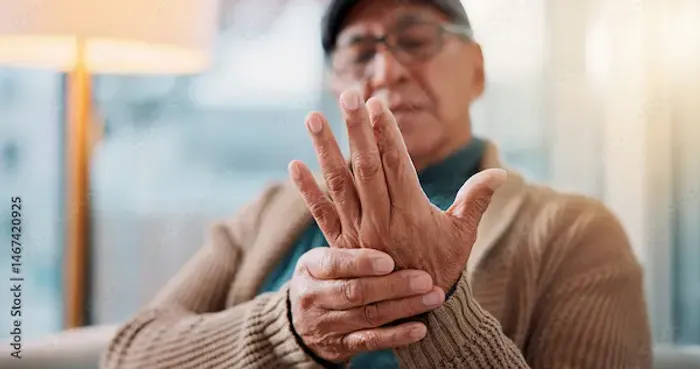
Introduction
Parkinson's disease is a progressive neurodegenerative disorder that affects movement, but its impact extends far beyond a simple tremor. Understanding the signs and stages of Parkinson's is crucial, whether for personal awareness or supporting a loved one. The journey with Parkinson's is unique for everyone, yet recognising common early warning signs can lead to earlier diagnosis and more effective management strategies.
This guide explores the symptoms, from well-known motor issues to subtle non-motor clues that may appear years before a formal diagnosis, and walks through the typical stages of Parkinson's disease using the Hoehn and Yahr scale. Our goal is to empower you with knowledge, reduce anxiety, and highlight ways to live a full life while managing the condition. If you notice persistent symptoms in yourself or a family member, consulting a neurologist is the critical first
step. Platforms like Apollo24|7 can connect you with specialists for an initial online consultation.
What is Parkinson's Disease?
At its core, Parkinson's disease is characterised by the breakdown and death of specific nerve cells (neurons) in the
brain, primarily in a region called the substantia nigra. These neurons produce dopamine, a chemical messenger vital for coordinating smooth, purposeful movement. As these cells are lost, dopamine levels drop, leading to the progressive motor symptoms associated with the disease. The cause of this cell death is not entirely understood, but it is believed to involve both genetic and environmental factors. Abnormal clumps of a protein called alpha-synuclein, known as Lewy bodies, are also a hallmark found in the brains of people with Parkinson's.
The Role of Dopamine
Dopamine acts like the oil that keeps the engine of movement running smoothly. When sufficient dopamine is present, signals from the brain to the muscles are transmitted efficiently, allowing for effortless walking, reaching, and speaking. In Parkinson's disease, as dopamine production declines, this communication network falters. Movements become slower, less coordinated, and more difficult to initiate. This dopamine deficit explains the key motor symptoms and also contributes to changes in mood, motivation, and cognition, which account for many non-motor symptoms.
Consult Top Doctors for Personalised Advice
The Early Signs of Parkinson's Disease
Early signs can be subtle and are often mistaken for normal ageing. Symptoms typically appear gradually and worsen over time, and they can be divided into motor and non-motor categories.
A. Motor Symptoms: The More Visible Signs
The four primary motor symptoms, often referred to as the "cardinal signs," are central to diagnosis. A neurologist
typically looks for at least two to be present.
1. Tremor: The Most Recognised Symptom
A slight shaking or tremor, often starting in a hand, finger, or thumb, is perhaps the most recognised early symptom.
The "pill-rolling" tremor, where the thumb and forefinger rub together, is most noticeable when the limb is at rest and
tends to lessen during voluntary movement. It is important to distinguish this from an essential tremor, which typically
occurs during action, such as holding a cup.
2. Bradykinesia: Slowness of Movement
Bradykinesia refers to a slowing of movement and can be one of the most disabling early symptoms. It may appear as
smaller handwriting (micrographia), difficulty with fine motor tasks like buttoning a shirt, reduced facial expression
(hypomimia or "masked face"), and a general sense of stiffness or sluggishness.
3. Rigidity: Muscle Stiffness
Rigidity is muscle stiffness that persists during movement. It can occur anywhere in the body, causing pain and limiting
the range of motion. This stiffness contributes to the stooped posture often seen in Parkinson's disease.
4. Postural Instability: Balance Problems
While more common in later stages, mild balance issues can occur early. This impairment of reflexes that maintain
upright posture leads to a sense of unsteadiness when turning or being bumped, increasing the risk of falls.
B. Non-Motor Symptoms: The Hidden Clues
Non-motor signs often appear years before obvious motor symptoms and are critical early indicators.
1. Loss of Smell (Hyposmia)
A reduced ability to smell (hyposmia) or complete loss (anosmia) can appear up to a decade before motor symptoms.
Difficulty detecting foods such as bananas, dill pickles, or licorice may be an early warning sign.
2. Sleep Disorders and REM Sleep Behaviour Disorder
REM Sleep Behaviour Disorder (RBD) involves acting out dreams, sometimes violently, through talking, shouting, or
flailing. This differs from normal sleep talking and is a strong predictor of developing Parkinson's or related disorders.
3. Mood Changes: Depression and Anxiety
Depression and anxiety are common and can precede motor symptoms. They are linked to changes in brain chemistry,
not merely a reaction to diagnosis.
Understanding the Stages of Parkinson's Disease
Parkinson's progression is commonly assessed using the Hoehn and Yahr scale, which gauges motor symptoms and
functional disability. Not everyone experiences all symptoms, and progression varies greatly.
The Hoehn and Yahr Scale: The Clinical Standard
This five-stage scale is widely used to describe disease severity.
Stage 1: Unilateral Symptoms
Symptoms are mild and appear on one side of the body. Tremors and rigidity may be present but are not disabling.
Daily activities are generally unaffected.
Stage 2: Bilateral Symptoms
Symptoms affect both sides of the body. Postural instability may start, though balance is maintained. Walking and
posture difficulties may appear, but independence is preserved.
Stage 3: Mid-Stage and Balance Impairment
Balance issues become more pronounced, increasing the risk of falls. The person remains physically independent but
experiences difficulties with activities such as dressing and eating.
Stage 4: Severe Disability
Symptoms are severe, and although walking or standing without assistance may still be possible, substantial help is
required for daily activities. Living alone safely is unlikely.
Stage 5: Advanced Parkinson's
Leg rigidity may prevent standing or walking. The individual is wheelchair-bound or bedridden and needs constant
care. Hallucinations or delusions may occur.
Living Well with Parkinson's: Management and Treatment
While there is no cure, effective management can greatly improve quality of life.
1. Medication and Therapies
Treatment primarily involves medications to increase dopamine levels or mimic its effects, such as levodopa or
dopamine agonists. Deep brain stimulation (DBS) may be an option for some. Physical therapy, occupational therapy,
and speech therapy play key roles in managing daily function and mobility.
2. The Importance of a Support System
Family, friends, healthcare providers, and support groups are invaluable. Maintaining activity, a healthy diet, and
managing comorbidities are essential. If symptoms persist, booking a physical consultation with a neurologist via
Apollo24|7 can help create a personalised long-term management plan.
Conclusion
Understanding the signs and stages of Parkinson's disease empowers individuals and families to face the future with
knowledge. Recognising early non-motor clues and the progression through stages allows for timely intervention and proactive management. Each person's journey is unique, and numerous treatments and support systems can help maintain independence and quality of life. Consulting a doctor online with Apollo24|7 provides a convenient way to take the first step towards diagnosis and care.
Consult Top Movement Disorder Specialists
Consult Top Movement Disorder Specialists

Dr. Anjan Das
Ayurveda Practitioner
8 Years • Ayurvedacharya ( B.A.M.S )
Dumdum
Vedhive Ayurveda Clinic, Dumdum

Dr. Dhanunjaya Rao Ginjupally
Neurosurgeon
11 Years • M.B.,B.S., M.S.(Gen. Surg), M.Ch.(Neurosurgery) IFAANS Fellow, Movement disorders and Functional Neurosurgery/Neuro-oncology. University of Kentucky college of Medicine, USA.
Hyderabad
Apollo Hospitals Jubilee Hills, Hyderabad
(75+ Patients)

Dr. Soumya Sharma
Parkinson's & Movement Disorder Physician
8 Years • Fellowship in Parkinson’s disease and Movement disorders (London, Ontario, Canada), MBBS, MD (Internal Medicine), DM (Neurology),
Hyderabad
Apollo Hospitals Jubilee Hills, Hyderabad
(50+ Patients)
Consult Top Doctors for Personalised Advice

Dr. Anjan Das
Ayurveda Practitioner
8 Years • Ayurvedacharya ( B.A.M.S )
Dumdum
Vedhive Ayurveda Clinic, Dumdum

Dr. Dhanunjaya Rao Ginjupally
Neurosurgeon
11 Years • M.B.,B.S., M.S.(Gen. Surg), M.Ch.(Neurosurgery) IFAANS Fellow, Movement disorders and Functional Neurosurgery/Neuro-oncology. University of Kentucky college of Medicine, USA.
Hyderabad
Apollo Hospitals Jubilee Hills, Hyderabad
(75+ Patients)

Dr. Soumya Sharma
Parkinson's & Movement Disorder Physician
8 Years • Fellowship in Parkinson’s disease and Movement disorders (London, Ontario, Canada), MBBS, MD (Internal Medicine), DM (Neurology),
Hyderabad
Apollo Hospitals Jubilee Hills, Hyderabad
(50+ Patients)
More articles from Parkinsons Disease
Frequently Asked Questions
Q1. What is the life expectancy for someone with Parkinson's disease?
Parkinson's disease itself is not fatal. People with Parkinson's generally have a near-normal life expectancy. Managing symptoms and overall health is key to preventing complications such as pneumonia or falls.
Q2. What is the difference between Parkinson's tremor and essential tremor?
A Parkinson's tremor is usually a 'resting tremor,' occurring when the muscle is relaxed and diminishing with movement. An essential tremor is an 'action tremor,' noticeable during activities like holding a cup or writing.
Q3. Can Parkinson's disease be prevented?
There is no proven way to prevent Parkinson's disease, as its exact cause is unknown. Research suggests regular aerobic exercise and a diet rich in antioxidants may help protect brain health.
Q4. What are the latest new treatments for Parkinson's?
Research continues on treatments, including refined deep-brain stimulation and focused ultrasound. Experimental drugs targeting alpha-synuclein aim to slow or halt disease progression.
Q5. At what age does Parkinson's disease usually start?
The average age of onset is around 60, though 5–10% of people experience 'young-onset Parkinson's' before age 50. Symptoms can occasionally appear even earlier, though this is rare.
